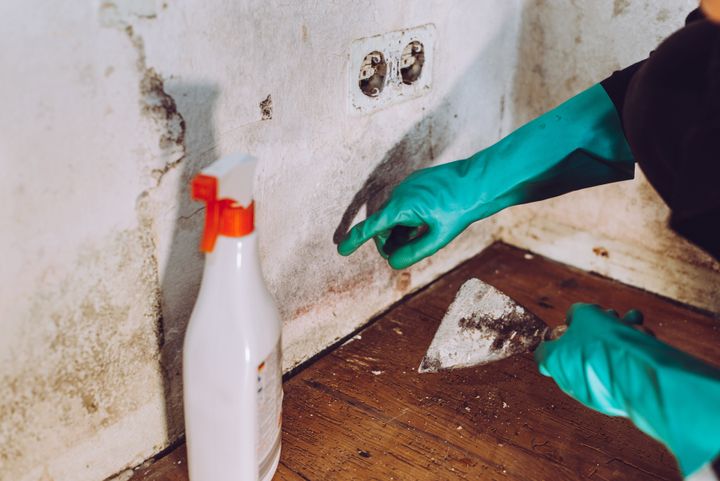
Let’s be honest – who hasn’t experienced an unwelcome appearance from some mould spores this winter?
With freezing temperatures and sky-high energy bills, it’s no surprise that it feels like there’s even more of this slightly gross fungus making itself at home in our homes this year.
It’s very common in the UK, but that doesn’t mean we should just pretend it’s not there as they can pose a health risk.
That includes causing asthma, making you more susceptible to a respiratory infection, eye, ear and skin irritation as well as general fatigue, and possibly causing havoc with your body in one way or another.
Luckily, there are some things you can do to help keep it at bay, according to experts at the US Centres for Disease Control and Prevention and reports from The Guardian.
1. First up – clean it
Do not try to just brush it away – that will just spread out the spores.
Instead try bleach and water (but make sure you have the window open so you don’t breathe it in for too long) or use a mould spray with a biocide in it.
Then wipe the affected area, and let it dry.
2. Think about anti-mould paint
This only works once you’ve already removed the mould using the method above.
It doesn’t kill the mould which has already grown, but it does make it harder for the fungus to take hold there in the future.
Make sure you choose a breathable paint to stop such moisture being trapped in the walls.
3. Try to stop moisture collecting on cold surfaces
Many variations of mould form when moisture (like condensation) gathers on cold windows or walls which face the outside.
Try to cut down on this by making sure there isn’t a mysterious leak coming from any pipes, leaky windows or ceiling which would build up some moisture.
4. Ventilate, ventilate, ventilate
Try to open windows when you shower or afterwards, to help the steam leave, and use the extractor fan when cooking or drying clothes.
If you have trickle vents above your windows, open those as they let a small amount of fresh air in and the condensation out.
If you’re in a tight spot without trickle vents or extractor fans in the impacted room, you could try a dehumidifier – but they do tend to increase the energy bill.
5. Boost insulation
This makes surfaces not quite as cold, so when they meet the warm moisture, it’s less likely to result in a flurry of mould growth.
But, this only works when you don’t hamper ventilation in your property, too.
If you get mould at the bad of your fridge or wardrobes, you can use insulating products or dehumidifying sachets to collect the water and remove the moisture.
This should reduce the likelihood of your clothes becoming mouldy – but make sure to check on this regularly and change it so the moisture is still being effectively soaked up.
6. And what about...the heating?
Warmer air decreases the likelihood of mould because it stops the moisture from sticking to walls or windows etc, as it will just hang in the air. It warms up those freezing walls too, so less likely for mould to grow there.
Unfortunately, heating has become one of the most difficult to access necessities this winter due to the energy crisis, so you may want to consider this one as a last resort.